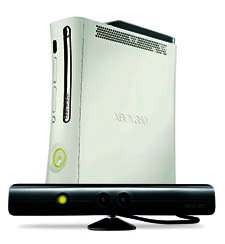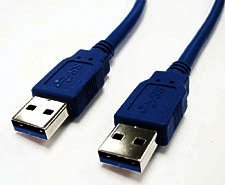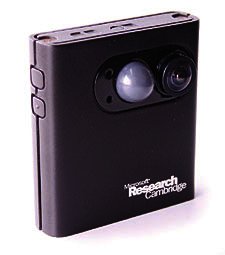PREVIOUS ARTICLENEXT ARTICLE
FEATURE ARTICLES
Trends for 2010 and beyond
By Thomas McKinnon 7 January 2010 | Categories: feature articles >> Google Chrome OS >> Google Chrome OSWith Google officially releasing their open-source Google Chrome OS later this year, we could be in for one of the most interesting IT battles in recent history. Microsoft Windows vs Google Chrome OS – what a prospect. With a number of computer manufactures including Acer, Lenovo and HP, planning to have machines running Chrome OS, Google has the support. But will Chrome turn out to be nothing more than a damp squid? Last year November the Chrome OS was released to the open-source development community as Chromium OS. Its reception can best be described as muted, with Chromium said to be nothing more than the Chrome web browser supported by web-based applications. If Google’s vice president of product management, Sundar Pichai, is to be believed, it won’t even support hard disk drives, only SSD memory. Little wonder then that the Chrome OS is first to be released on netbooks. Whether Google is busy with major coding to get Chrome OS ready for mass release on regular PCs and notebooks is debatable, but for now the much anticipated Google operating system looks less like a bang, and more like a whimper. |
|||
 >> Gesture driven gaming >> Gesture driven gamingThe Nintendo Wii was the first console with motion-sensing technology, with the Wiimote control emulating your movements on-screen. Now Microsoft is doing away with the need for a controller altogether, with their awesome looking “Project Natal” due for release in November. The Natal sensor device combines a depth sensor, an RGB camera, a voice sensor and its own processor to track movement in 3D, literally making your body the controller. It will work with any Xbox 360, and what’s more, it can recognise voices and faces, respond to voice commands and scan in real life objects to use in-game. The PS3 isn’t standing idly by, although motion sensing on Sony’s wand-shaped motion controller, rumoured to be called “Gem”, follows Nintendo’s path more than it does Microsoft’s. Like Project Natal, it uses a camera to gauge your motion, but just as the Wiimote, the action in a game is still handled by a controller, rather than body movements. It’s speculated that the Gem will see the light of day as soon as February, albeit for now in Japan only. |
|||
 >> 3D technology >> 3D technology2010 will be the year 3D cracks the consumer electronics market. While the technology has been around in a number of forms for many years, consumers are likely to encounter a lot of 3D capable devices this year. Sony, Philips, LG and Panasonic are all looking to launch 3D TVs in the consumer space. We already looked at Acer’s well priced 3D notebook last year, with a number of manufacturers hot on their heels with their own releases this year. Watching movies and sports events in 3D from your own living room is literally just around the corner. Sony’s announcement about 3D broadcasts and an ‘official 3D film’ for the 2010 FIFA World Cup, are examples of just how close we are. A draft standard for bringing hardware accelerated 3D graphics to the web has also been announced. While not the same type of technology, 3D as a marketing trend is also extending to other devices, with compact cameras (Fujifilm’s FinePix Real 3D W1) and GPS devices (using NAVTEQ maps) featuring 3D modes. |
|||
 >> Bluetooth 3.0 and USB 3.0 >> Bluetooth 3.0 and USB 3.0Higher data transfer speeds are on the agenda as both Bluetooth 3.0 and USB 3.0 are due for release to the consumer market in 2010. Bluetooth 3.0 was formally adopted by the Bluetooth Special Interest Group (a not-for profit trade association) in April 2009. The new standard will benefit from the 802.11 radio protocol which translates to increased data throughput rates, from the current 3 Mbps to 24 Mbps. Basically, transferring large multimedia files like video, music and images wirelessly will no longer be an absolute pain in the backside, plus there’s even talk of streaming video, say from your phone to your TV, wirelessly. USB, the world’s most popular peripheral interface is about to evolve into what is being called SuperSpeed bus. First demonstrated in late 2007, USB 3.0 includes four more channels, better power supply to devices and the ability to receive and transmit data. Wide scale consumer adoption is expected to occur in 2010, with the promise of 4 Gbps of raw throughput, 10x more than current 2.0 speeds. |
|||
 >> Life Capturing >> Life CapturingThe extent to which we document our lives via capturing video, photos and recording audio is set to increase, again. If we’re to believe Microsoft researcher Gordon Bell we’ll be capturing our entire lives in digital memory by 2020. Bell is a living experiment of so called “life capturing”, having captured, catalogued and stored many years of his life in digital format. He also recently published Total Recall, a book that explores the idea of an e-memory revolution. With inventions like Microsoft’s passive, wearable SenseCam which automatically captures photos from around your neck every few minutes, and the growth of free/cheap cloud storage his premise doesn’t seem too far off. The important thing to remember is that life capturing is not about broadcasting interesting memories but about recording banal, everyday events and non-events that mean something to you. |
|||
USER COMMENTS
Most Read Articles
Read

Magazine Online
TechSmart.co.za is South Africa's leading magazine for tech product reviews, tech news, videos, tech specs and gadgets.
Start reading now >
Download latest issue
Have Your Say
What new tech or developments are you most anticipating this year?
New smartphone announcements (45 votes)
Technological breakthroughs (29 votes)
Launch of new consoles, or notebooks (14 votes)
Innovative Artificial Intelligence solutions (29 votes)
Biotechnology or medical advancements (24 votes)
Better business applications (160 votes)


